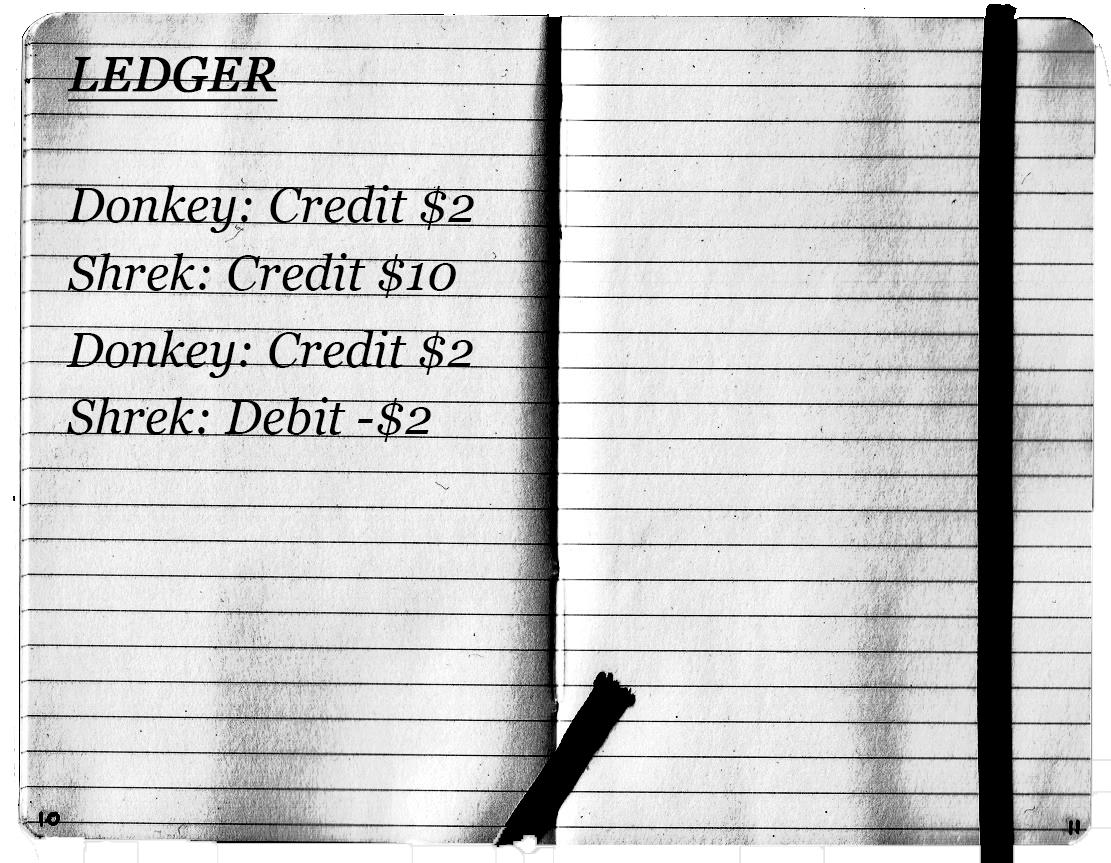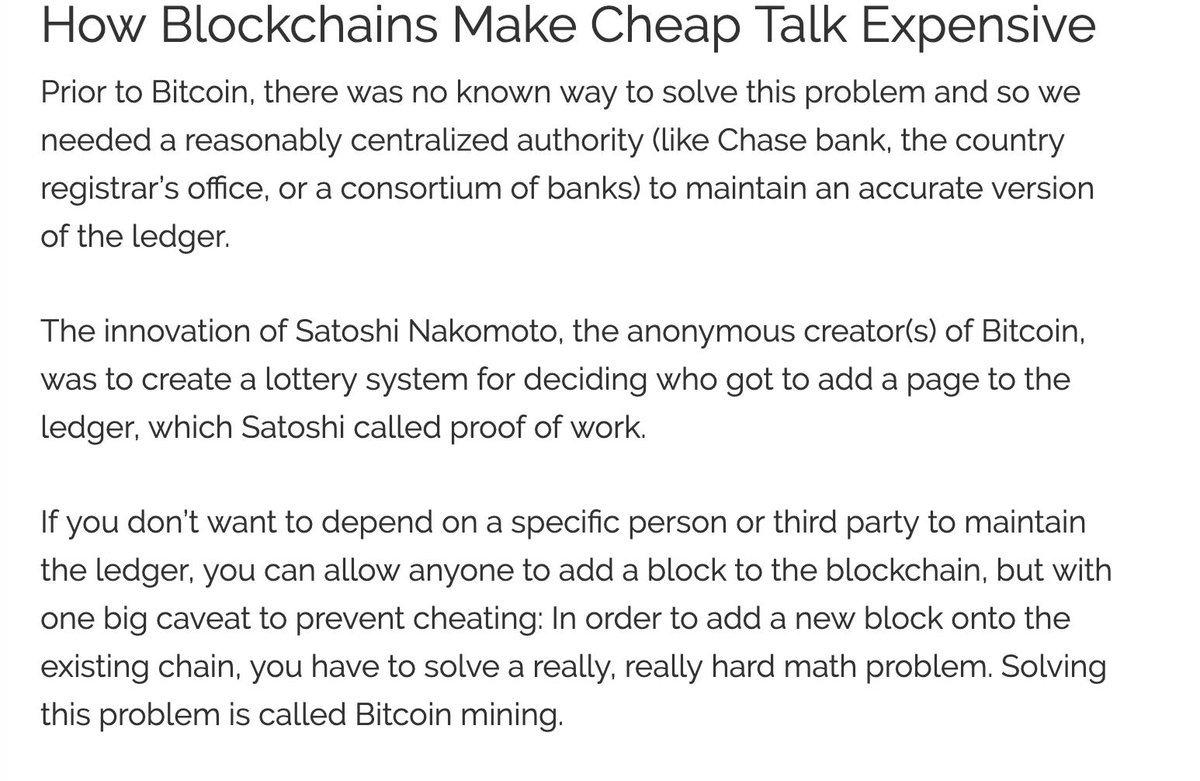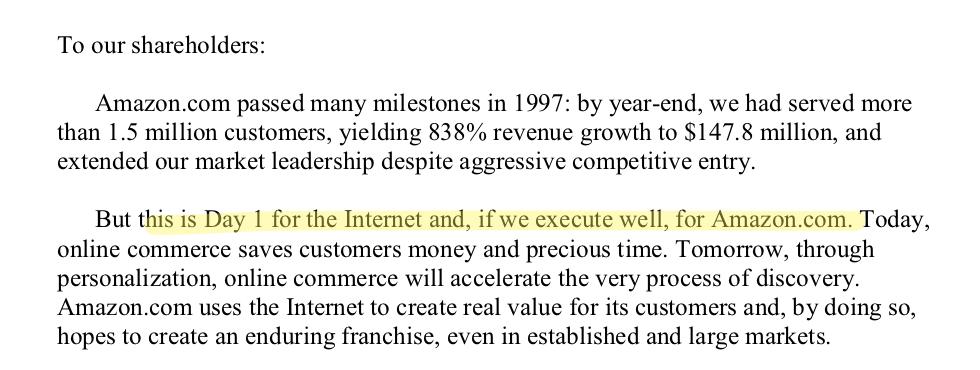Here is my best attempt to explain it to a generally intelligent, but non-technical person.
👇
This works great as long as the people in charge are perfectly honest and perfectly competent.
Unfortunately, humanity does not have the best track record of either
(Unless you’ve got lots student loans, in which case it would be sweet).
The point being that any time a system lets someone change history with a keystroke, you better REALLY trust that person
The tricky part here is if you have many people that can add things to the ledger, how do you know which version to trust?
In our ledger book analogy, you can think about a hash function like gluing completed pages together.
...
We need to have multiple copies of the blockchain, like Bitcoin, so other people can see if anyone tries to tamper with it.
In order to simulate this die roll, they use powerful computers which require a lot of electricity to run.

























